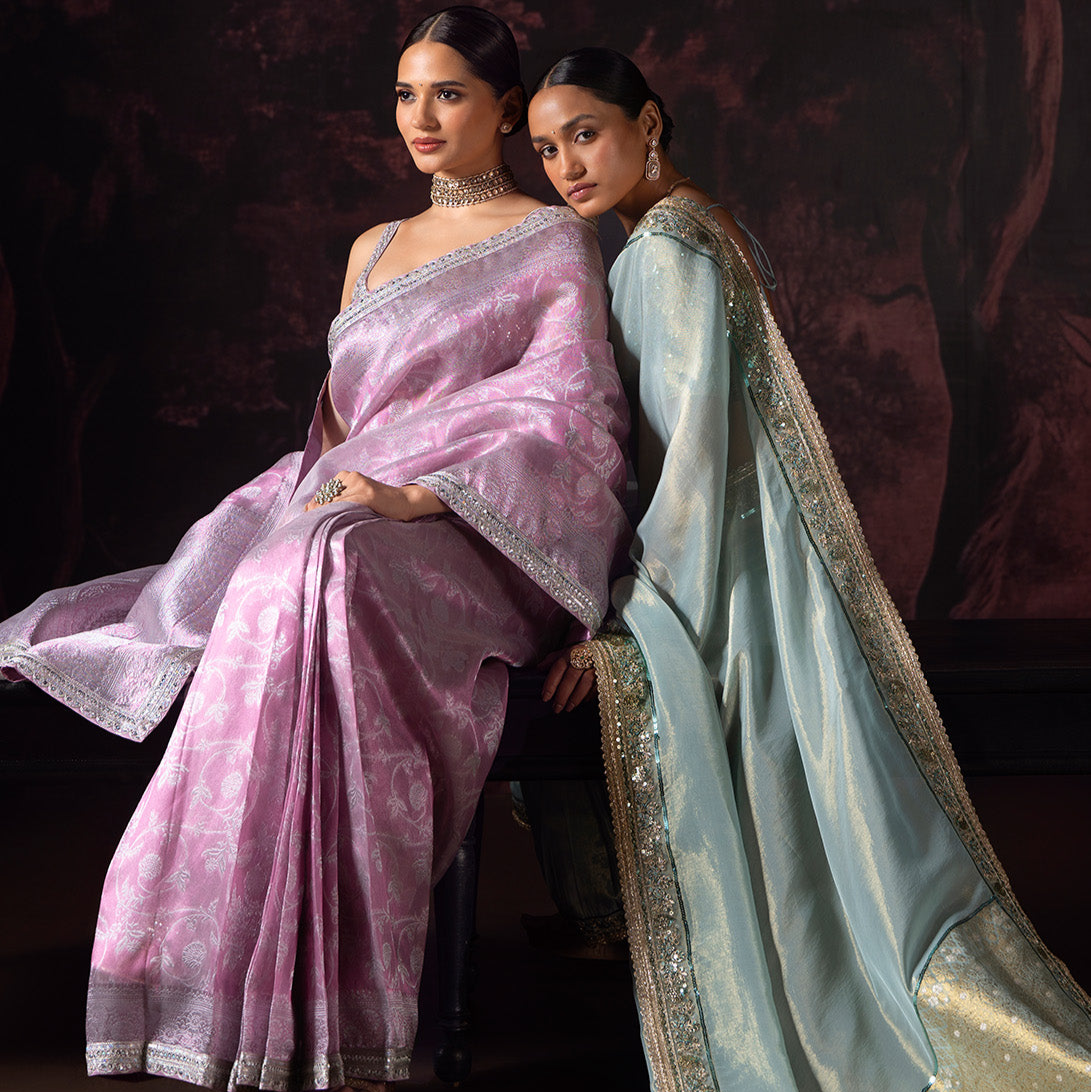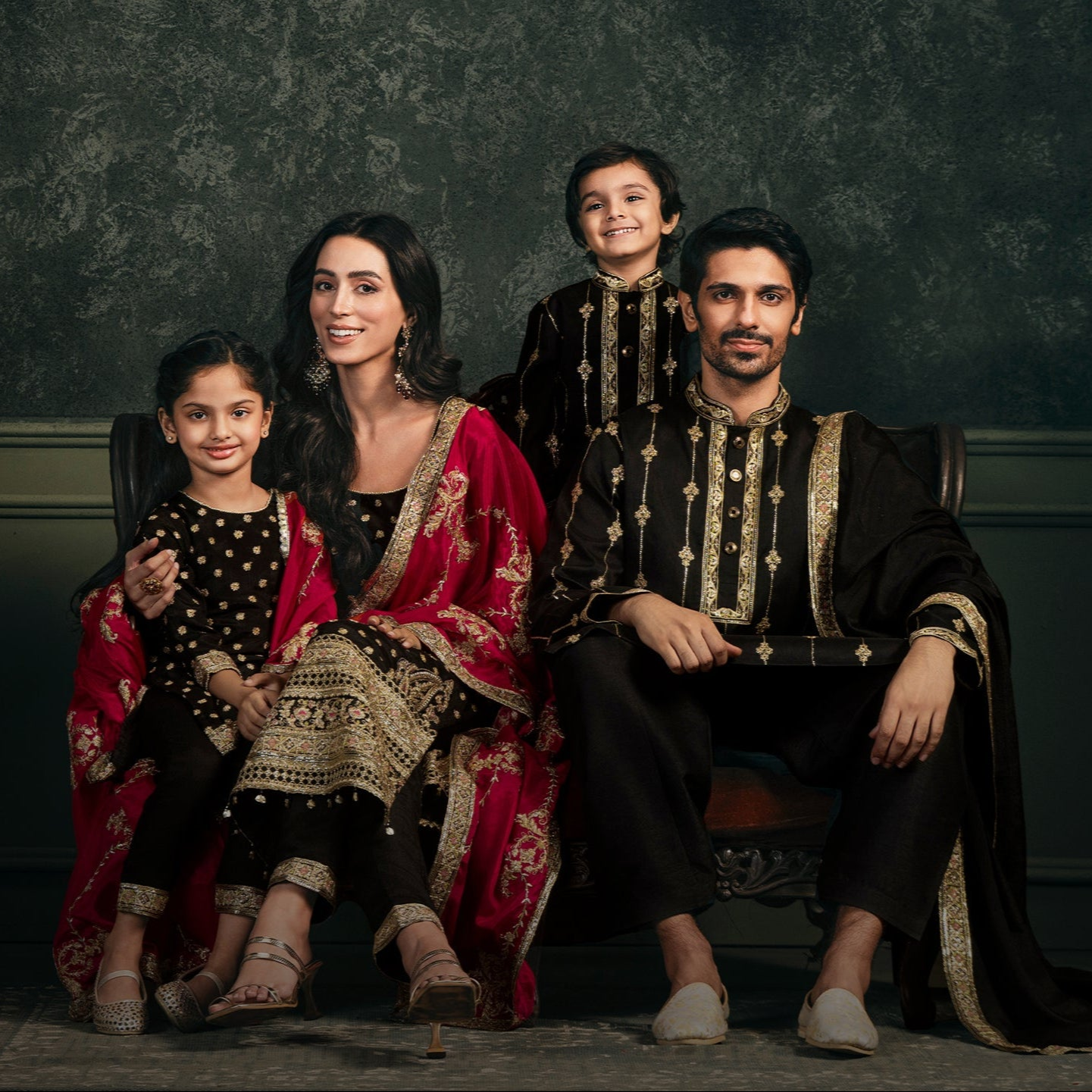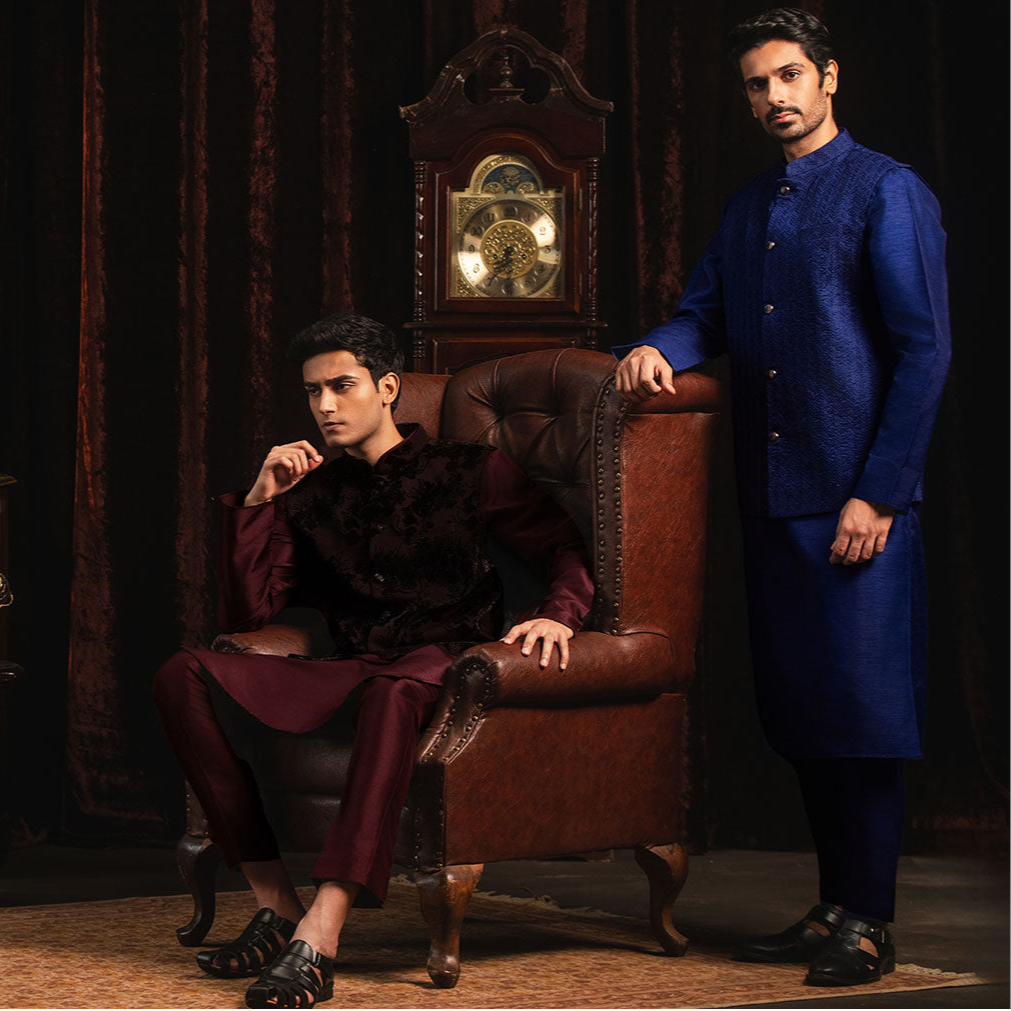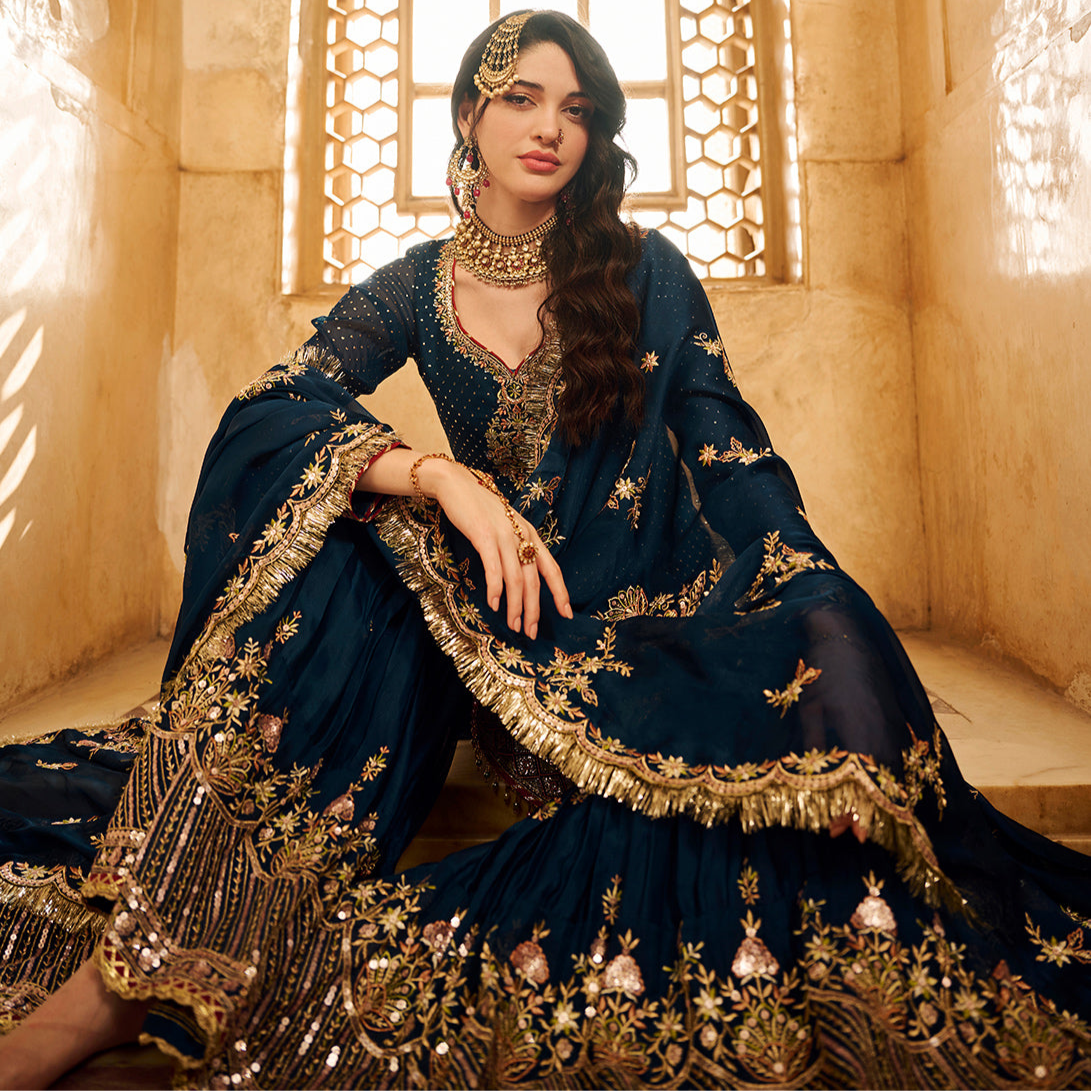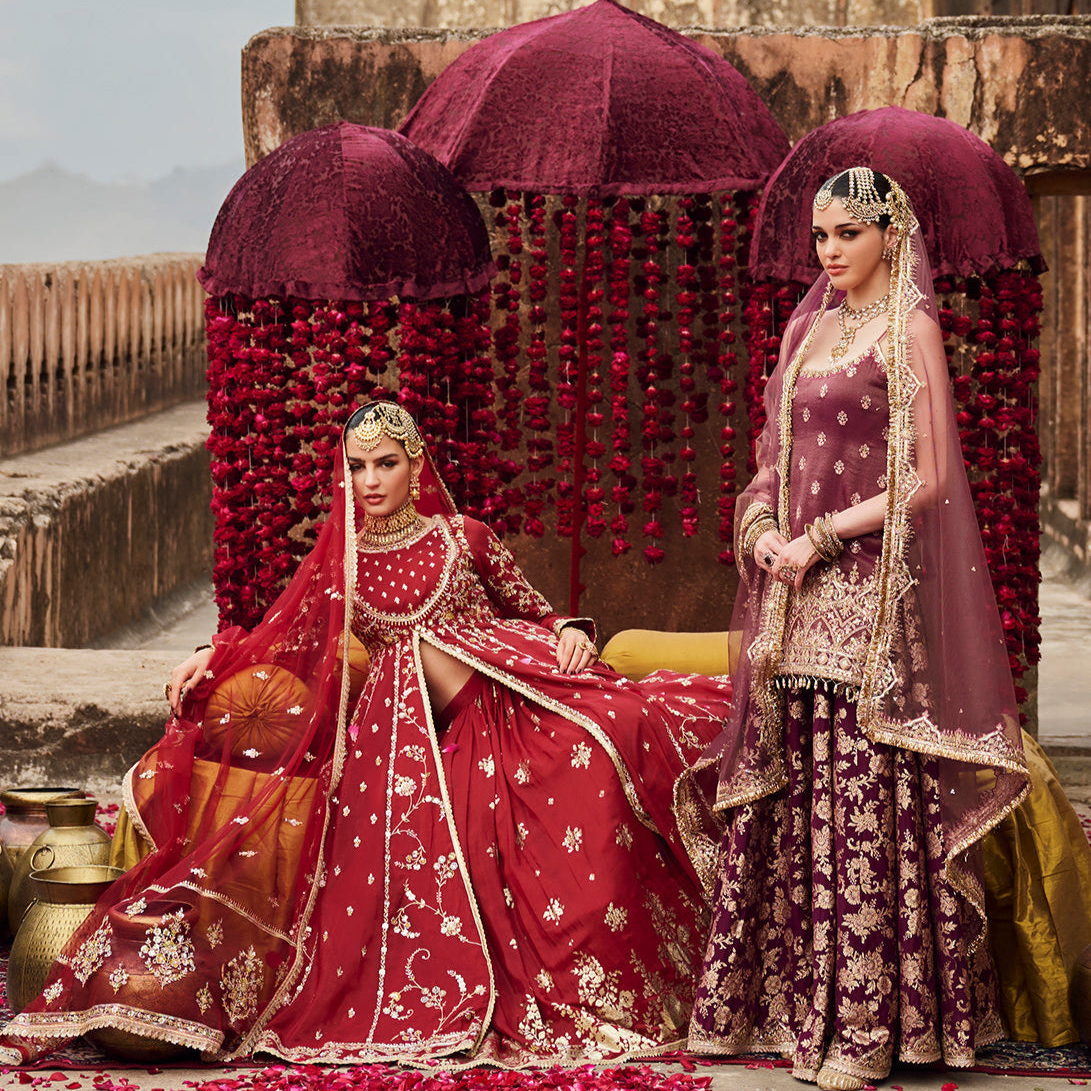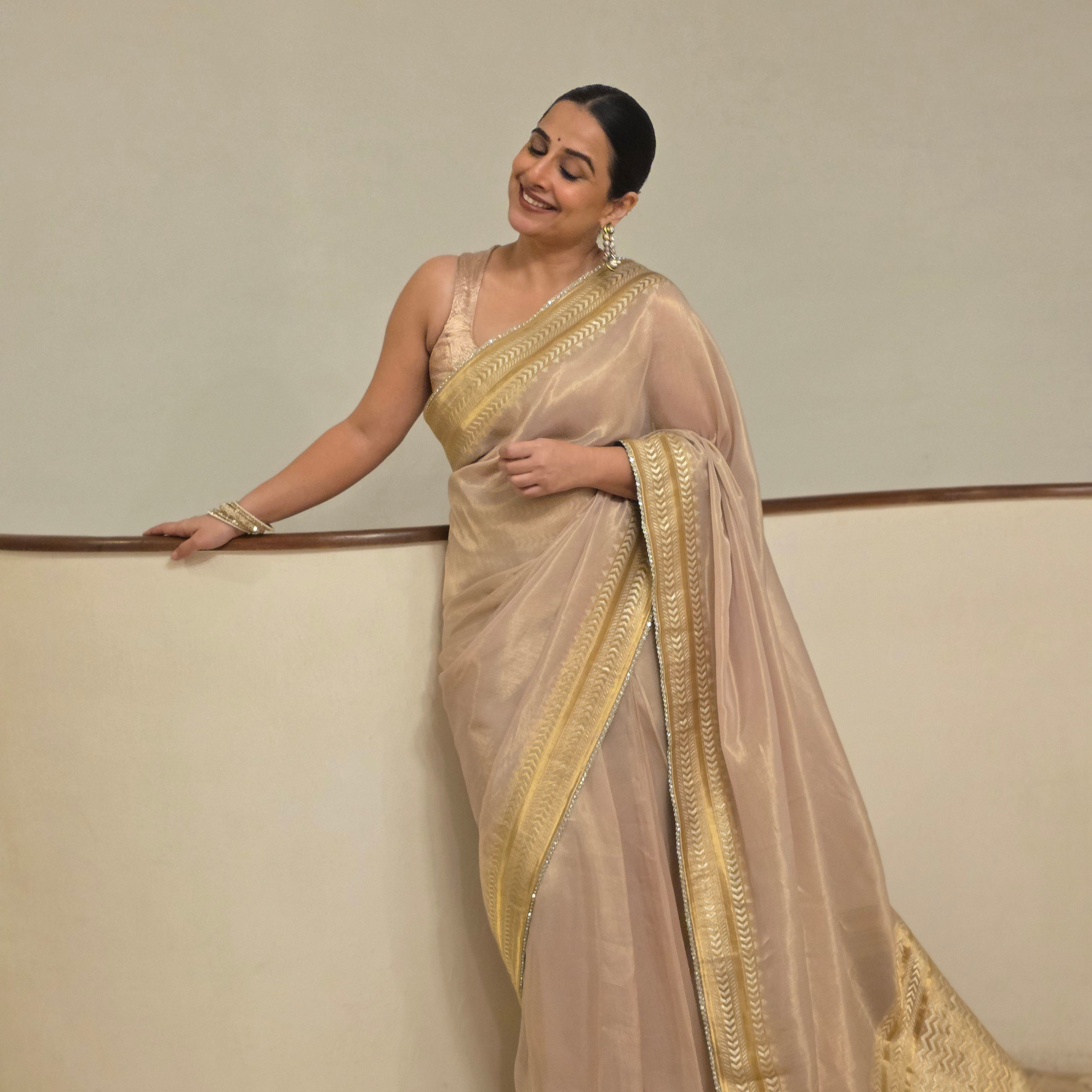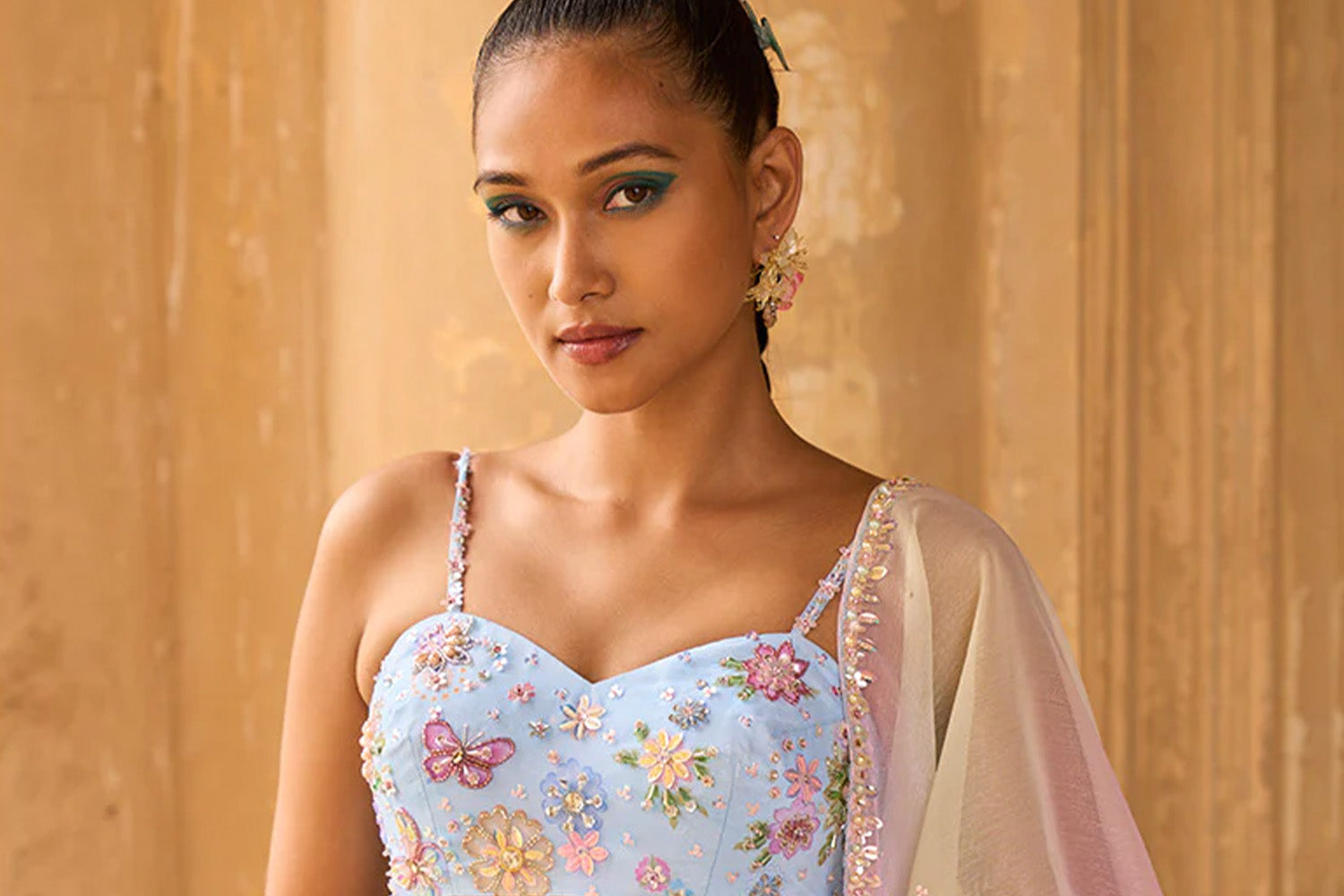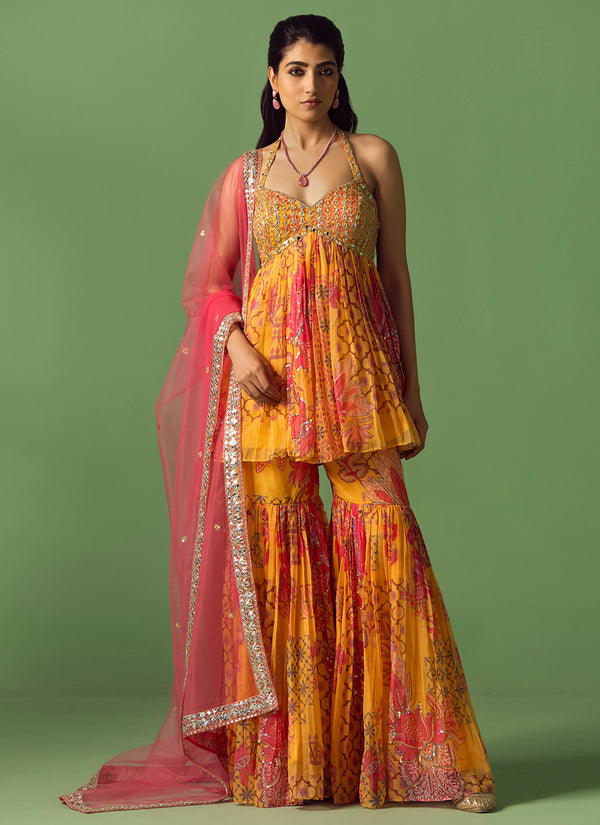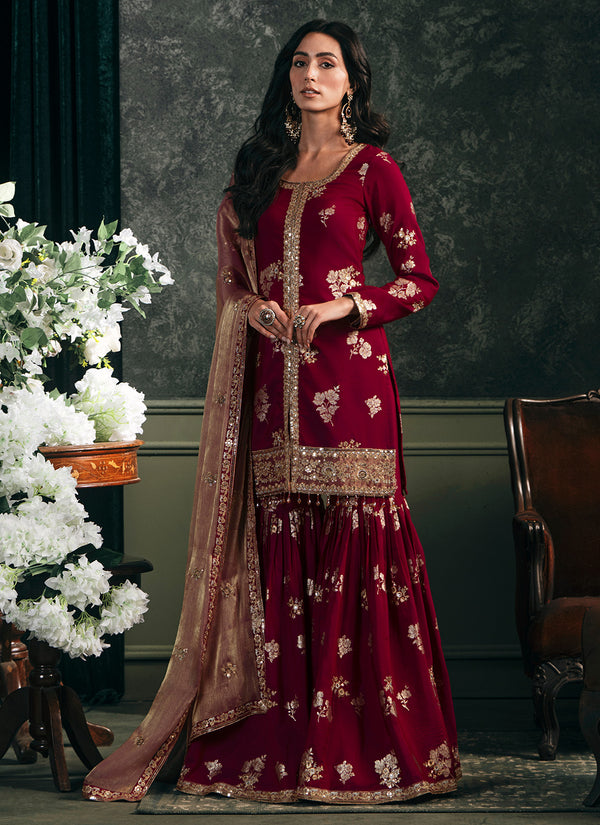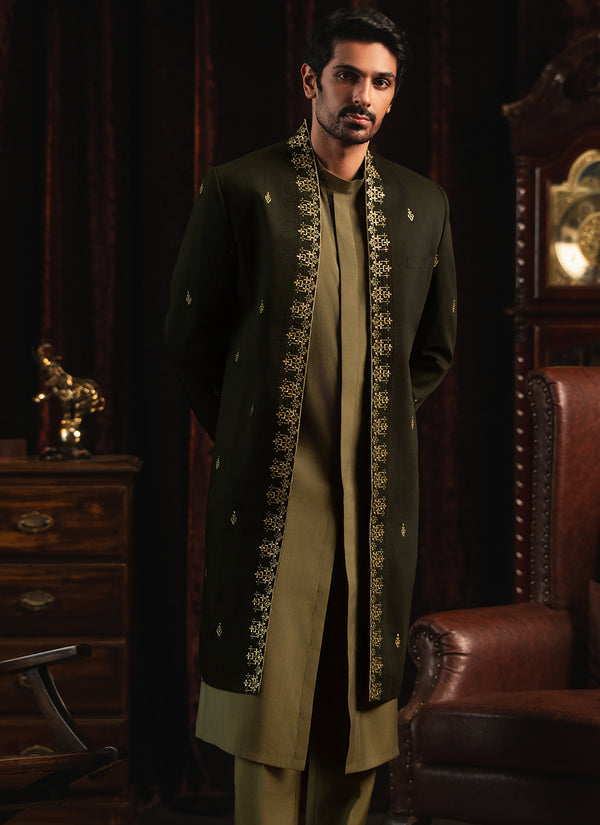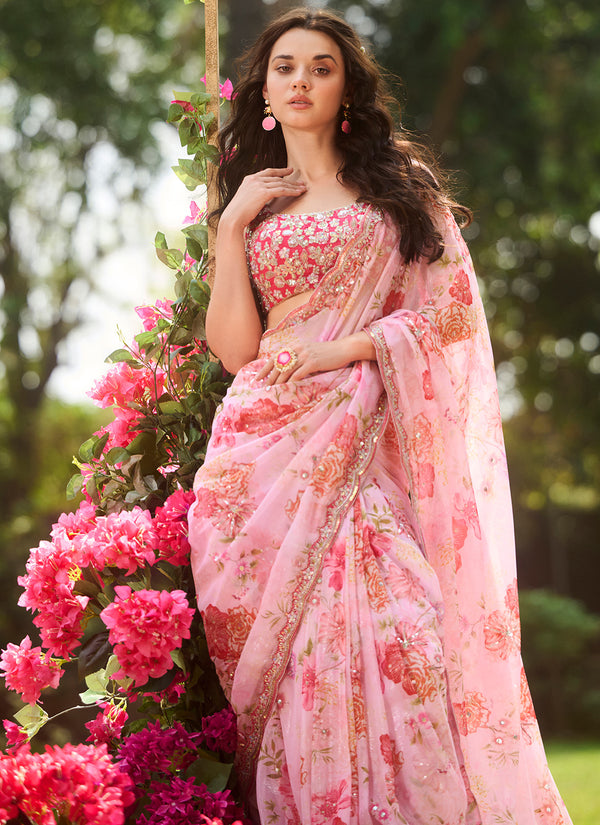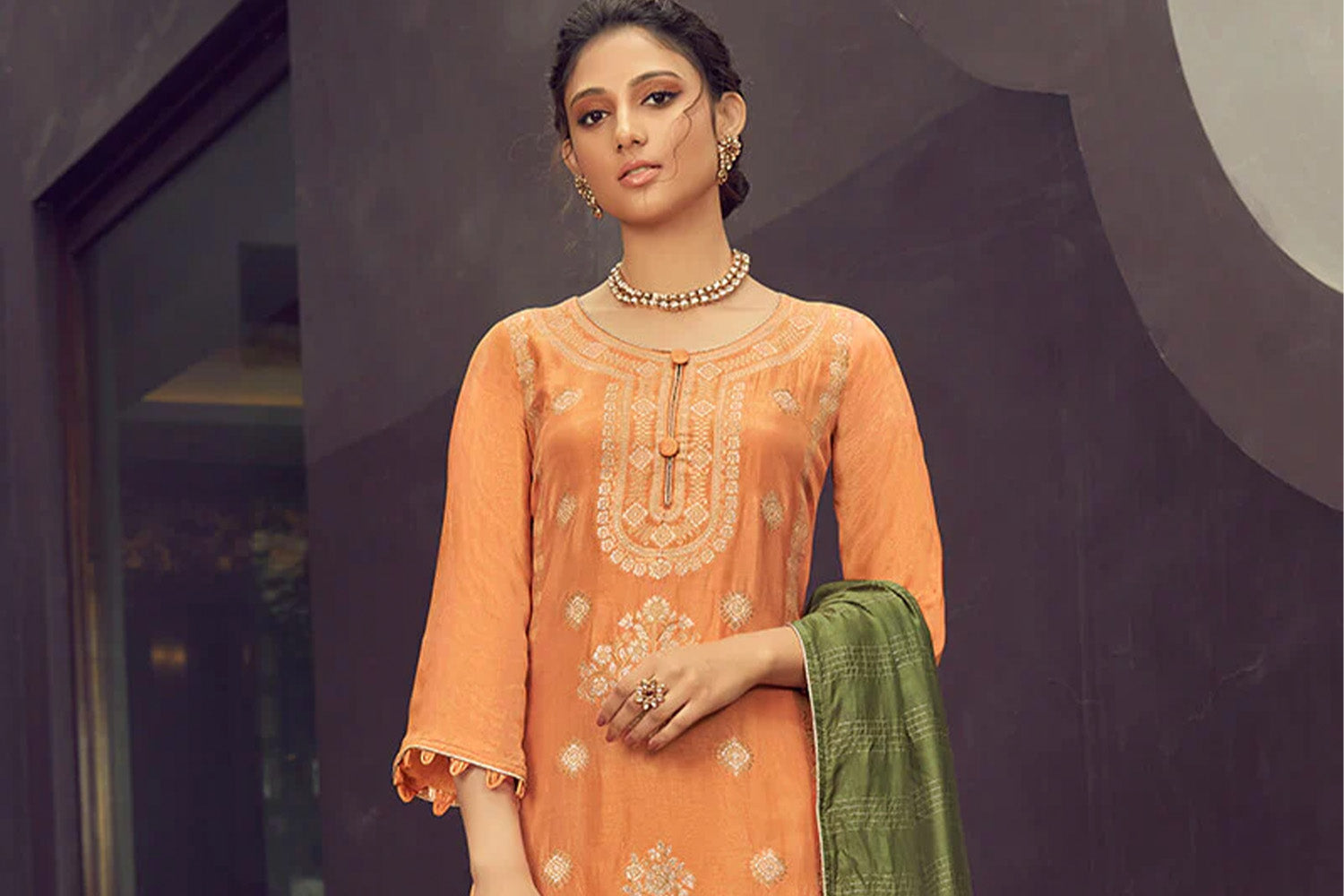
Chikankari Kurti: Six Styling Tips and Ideas
A chikankari kurti is one of the most common and well-known garment designs seen in the south Indian subcontinent and has been for quite some time. Although this distinctive design has been around for a while, there are a myriad of ways to style this long-loved garment for modern tastes and styles.
Read on to see our top six tips for styling chikankari kurtis for all of life’s occasions.
What Exactly Is Chikankari?
A chikankari kurti specifically refers to a kurti featuring a particular pattern of embroidery. Chikankari, literally translating into “embroidery,'' is one of the more traditional styles.
Originally, chikankari was embroidered on white fabrics with white thread, but today, various colors of thread are now also embroidered on pastel colors, jewel tones, and deeper shades to create a vibrant, contrasting design.
Recent years have found other embellishments being added to this design. Sequins, beading, mirror work patterns, and other accents like Kamdani, Badla, and Mukaish are common additions to chikankari patterns.
This specific type of embroidery is also only found on more lightweight fabrics like chiffon, silk, cotton, or crepe. Heavier fabrics, like wool or denim, don’t play nicely with delicate embroidery needles, leaving the final effect somewhat wanting. For embroidery on heavier fabrics, a proper sewing needle is used.
How Is Chikankari Made?
At the very beginning of the sewing process, the patterns are actually stamped onto the fabric with a large patterned ink block. Patterns are typically heavily concentrated around the trim of the fabric at the neckline, around the wrists, and along the bottom.
Small clusters of complementary patterns are spread sporadically down the length of the garment as an accent. These patterns can sometimes be geometric in nature, fanning out from the center of the garment or from a larger pattern across the chest.
Next, the patterns are very carefully sewn into place on top of the stamping. After all needlework and embellishments have been sewn onto the fabric, the kurtis are thoroughly washed to rid the fabric of any traces of ink.
The end result is one of the most popular articles of clothing with the ability to be dressed up or down for any of life’s occasions.
How Do You Style Chikankari?
1. Bottoms
Chikankari kurtis can be paired with just about any sort of bottoms for all occasions or climates. Casual days out and about are the perfect time to reach for a pair of jeans.
Slim-cut or skinny jeans are the most commonly seen cut of denim paired with chikankari kurtis, but flared-leg and boot-cut jeans are easy ways to add a little more dimension to your look.
Another way to create dimension is with the addition of palazzo pants like our Peach and Green Palazzo Pants. Some chikankari kurtis are sold with matching pants, but if no paired set is available, a simple pair of white linen palazzo pants makes for a striking fashion statement.
This is especially true if your kurti is embroidered with white threading.
Similarly, another option is to match the hue of your pants to the color of the embroidery for an eye-catching pop of color. Want to go even bolder? Try color blocking and matching the hue of your trousers to your saree, scarf, or other gems in your jewelry.
2. Jewelry
Traditional jewelry is another way to further bring out the unique embroidery on chikankari kurtis. Long chandelier earrings crafted into unique shapes and designs can actually echo the intricate patterns found on clothing, in addition to elaborate necklaces, rings, and bracelets.
Instead of opting for one or two thin bracelets, consider stacking multiple bangles on both wrists for added movement that is sure to shine. On special occasions, nose rings, headdresses, and other facial jewelry are great ways to elevate your get-up.
Want to literally sparkle from head to toe? Anklets and toe rings are perfect items to round out these metallic embellishments and really put your look together.
Anklets can be small and dainty or bold, like a bangle. Some anklets even extend to wrap around your toes, draping intricate beading and chains atop your foot, making it a lovely addition for special occasions where you might want a little more shine than usual.
Ethnic jewelry and accessories, in particular, like potli bags, chandbali earrings, juttis, or jhumkas, add traditional charm, shimmer, and additional color to the outfit. Even the starkets, solid white garments with minimal embroidery can be hugely elevated with jewelry and accessories.
3. Handbags
Again, even the most casual of garments can be elevated with accessories. Another way to further accentuate the details of your kurti is to add an elaborate beaded handbag to your look. It doesn’t need to be anything big — even the smallest of bags can bring a bunch of color to an otherwise classic outfit.
Potli bags, usually made of silk, satin, or velvet, are small drawstring bags that are typically adorned with crystals, beadwork, and other traditional designs. Embroidered straps, beaded handles, and beaded tassels are classic ways to add gilded glamor and modern style to an otherwise traditional ensemble in a flash.
4. Seasonal Ideas
Although chikankari kurtis are frequently made up of a very lightweight, sheer material, they can be worn year-round in any weather. In the cooler autumn and winter months, many modern women layer their kurtis with denim or even fleece-lined leggings.
Heavier sarees, particularly ones made of wool, velvet, and other heavy fabrics, are easy to drape over your shoulders before heading out of the house. Today, many modern women have also adorned their kurtis with cardigans, blazers, and long coats.
The summertime is when the kurti truly shines, thanks to its featherlight nature. During the summer, linen trousers, breezy palazzo pants, and sheer drapings made of the lightest chiffon or silk organza are the name of the game.
Most people will accessorize their kurtis with additional layering during the winter months. Come summertime, opt for slightly lighter jewelry, handbags, and other items, and you can shine without feeling weighed down.
5. Sarees and Other Drapings
“Drapings” can mean a lot of things. Drapings of all sorts can add warmth, lend protection from harsh sunlight, act as a barrier to protect you from the elements, or work as a makeshift fashion accessory.
We previously mentioned color blocking with sarees was an easy way to add some extra flair to an otherwise subtle outfit — this can also mean several things.
Warm weather sarees like our Soft Mint Embellished Chinon Saree, typically used to protect you from the elements or harsh sunlight, are usually made up of lightweight silk, chiffon, cotton, or other similar fabric. Some of these fabrics may have a sheen to them. Or, they might be trimmed with beading and other embellishments, or they may even match the embroidery on your kurti.
Dupattas like our Multicolor Phulkari Dupatta, one of the other popular types of draping, can be draped over your shoulders with the ends flowing behind you or over your forearms for a simple splash of color.
Formal dupattas are often made of luxurious fabrics like velvet and stitched with elaborate designs, mirror work, and gems are magazine cover-worthy. Formal dupattas are also typically threaded with metallic silver or gold thread, giving your jewelry just another chance to shine.
6. Cosmetics and Hair
While we may not think of it as a part of our outfit, cosmetics can also help bring out various color points of your look and create contrast. Makeup can take a casual outfit and turn it into something spectacular.
Maybe you are pairing a bright fuchsia top with a pair of white linen pants. Elevate it a step further and look for a complementary vivid fuchsia blush and lipstick.
Spots of blue or green in your outfit? A few sweeps of colorful eyeshadow or even eyeliner can help intensify eyes for any occasion.
For religious ceremonies, festivals, or other special occasions, you might boast intricate henna tattoo work on your hands, collarbone, or even the back of your neck. Let this artwork on the top half of your body shine, and clip your hair up and out of the way.
Not only are updos tidier and hassle-free, but they allow you yet another opportunity to accessorize.
If your kurti features hints of gold embroidery, look for clips, headbands, and other adornments sporting shades of gold or other beadwork that will match. If you do opt to leave your hair down or even wear it in a long braid, consider matching clips or pins to embellish your locks and further bring your look together.
Some intricate hair accessories, like jewelry or handbags, feature precious metals and very detailed handwork, making them as much of a possible heirloom as the other gilded pieces in your jewelry box.
Tradition Meets Fashion
One of the traditional Indian garments has evolved with the changing years as modern women have found ways to update chikankari kurtis for 21st-century tastes.
With so many ways to wear this specific type of kurti and seemingly unlimited options for styling, the possibilities truly are endless. Pieces like our Maroon Kurti Style Georgette Lehenga are inspected individually in India to ensure the highest quality and authenticity.
Browse our extensive selection of traditional Indian attire to add a few more of these essential staples to your wardrobe today.
Sources:
Chikankari Embroidery: Painting with the Needle | The Heritage Lab
Chikankari Embroidery | Parampara Project
Potli bags or clutch bags, which one will you choose? | VOGUE India

